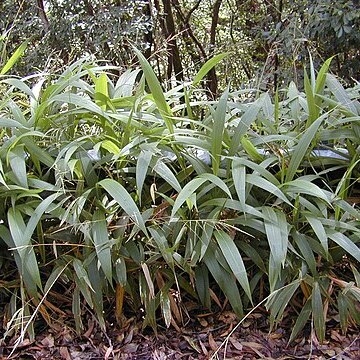Spikelets turgid, with one perfect terminal fl and a neuter or sometimes staminate floret below, sessile or subsessile, articulated and eventually deciduous above the persistent subtending bristles (or even above the glumes and sterile lemma), crowded into a dense and spike-like panicle with many nodes and short branches, each branch-system with numerous reduced sterile branches forming the prominent bristles; first glume triangular to ovate, 3-or 5-veined, up to nearly half as long as the spikelet; second glume several-veined, longer, up to as long as the spikelet; sterile lemma glume-like, about equaling the fertile one, usually with a well developed palea; fertile lemma indurate, smooth or more often transversely rugulose, its margins revolute and clasping a palea of similar texture. 140, cosmop., mostly in warm regions.
Annuals or perennials. Leaf-blades flat or folded, sometimes pleated; ligule usually a ciliate rim. Inflorescence a panicle, open or spike-like, the spikelets (or only the terminal) subtended by 1 or more bristles which persist on the axis after the spikelets fall. Spikelets oblong to ovate, ± plano-convex, awnless; glumes unequal, the lower generally much smaller, ovate from a clasping base; lower floret ♂ or barren, as long as the spikelet, herbaceous; upper lemma crustaceous, strongly convex on the back, often rugose, the margins inrolled and clasping only the edges of the palea. Caryopsis oblong or ellipsoid.
Spikelets subtended by one or more bristles, the spikelets deciduous, the bristles persistent; first glume broad, less than half as long as the spikelet, 3-to 5-nerved; second glume and sterile lemma nearly equal, slightly longer than the fruit, or the glume sometimes shorter; fruit indurate, smooth or rugose. Annuals or perennials with flat, sometimes plaited blades, and spike-like, bristly panicles, or the panicles open with the spikelets rather crowded along the branches, some of the branches or branchlets reduced to sterile bristles around the spikelets.
Inflorescence a panicle, either spiciform or with spikelets ± contracted about primary branches, these occasionally reduced to racemes, all or most of the spikelets subtended by 1 or more scabrid (rarely hirsute) bristles which persist on axis.
Glumes unequal, the inferior generally much smaller, ovate from a clasping base.
Superior lemma crustaceous, strongly convex on the back, often rugose.
Inferior lemma as long as spikelet, herbaceous.
Spikelets oblong to ovate, ± gibbous.


